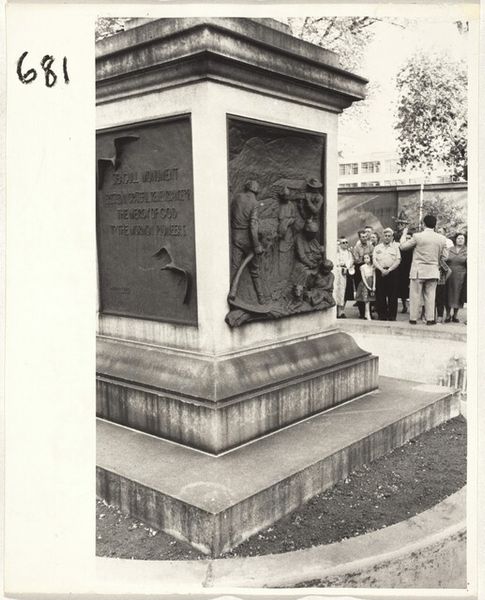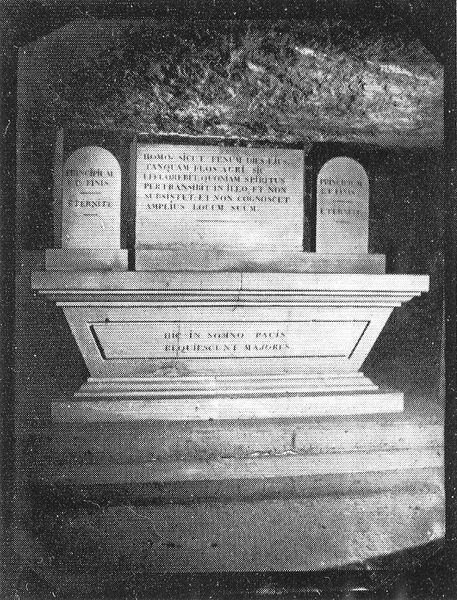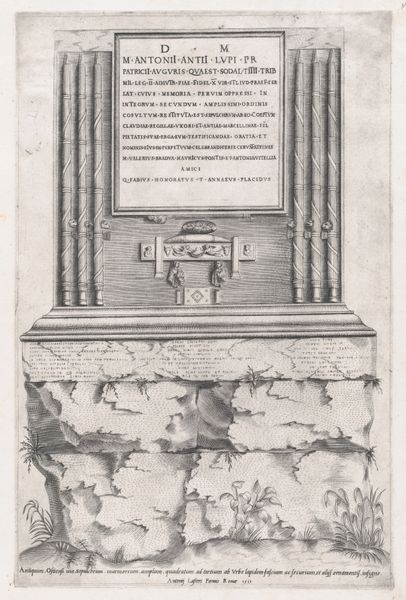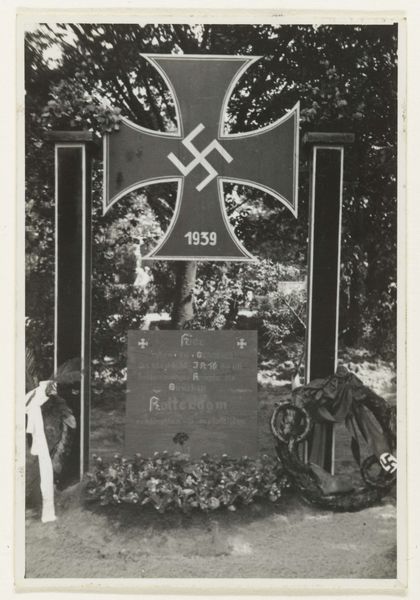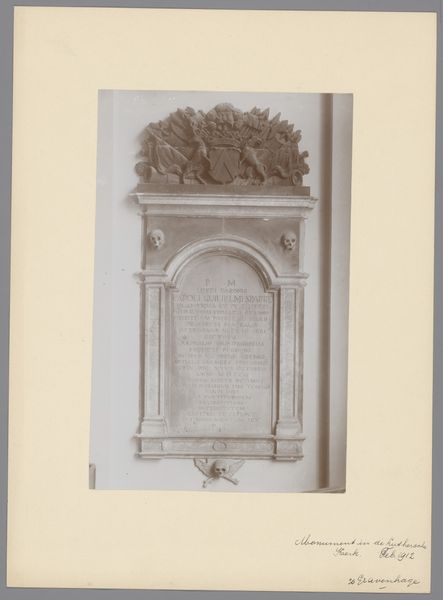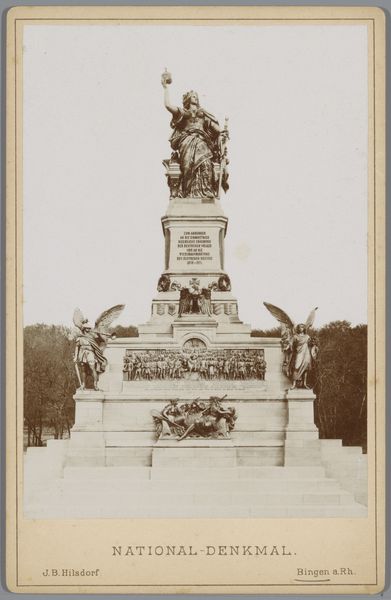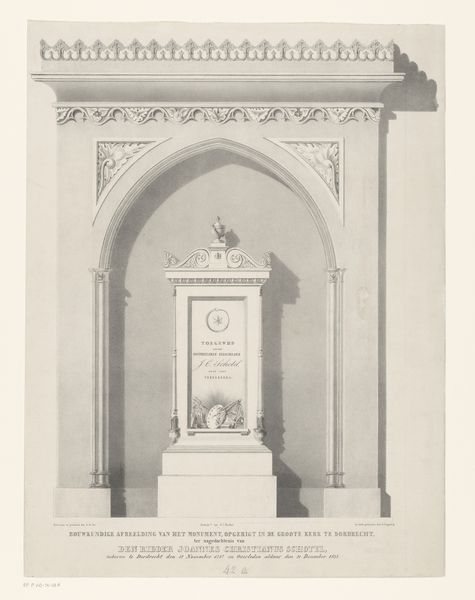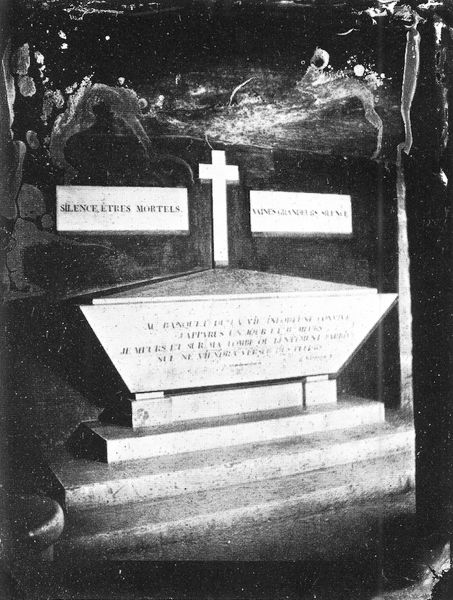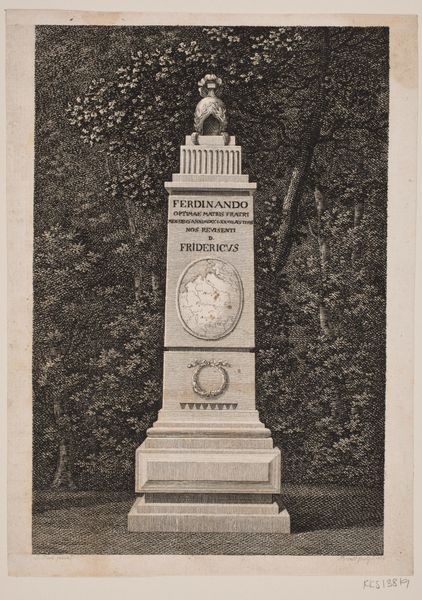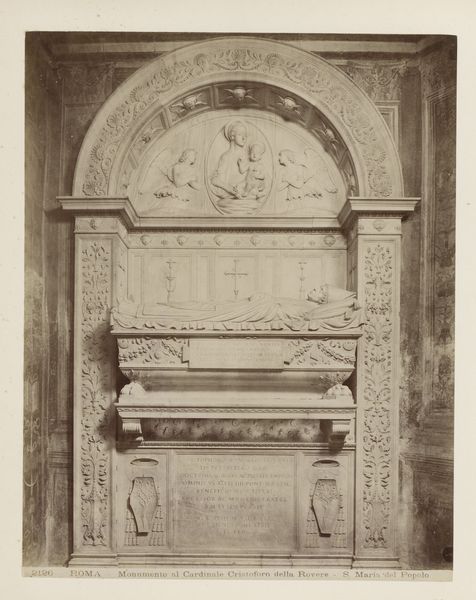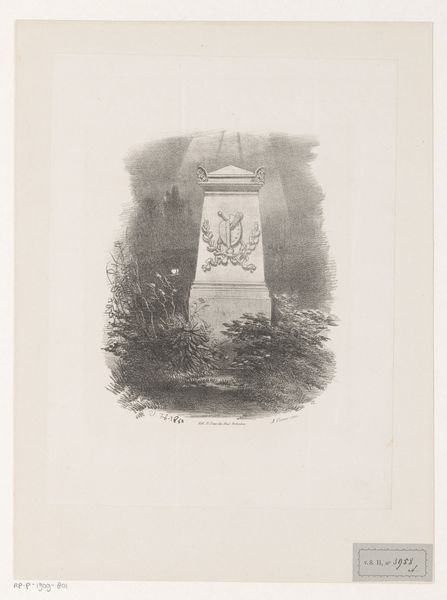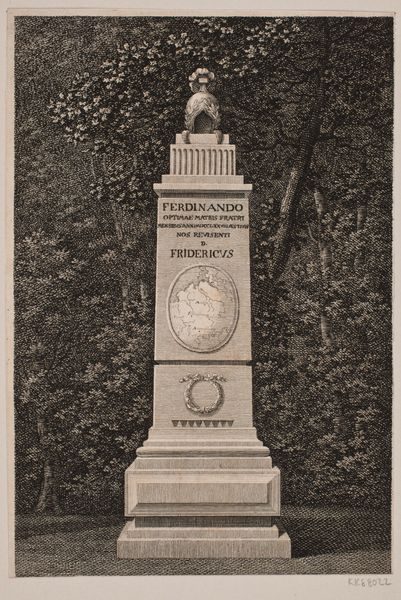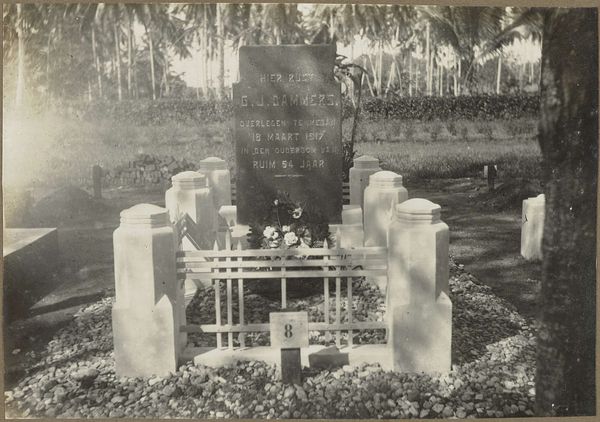
public-art, photography, sculpture, site-specific
#
neoclassicism
#
sculpture
#
memorial
#
landscape
#
public-art
#
photography
#
sculpture
#
site-specific
#
history-painting
#
monochrome
#
statue
#
monochrome
Dimensions: image: 30.5 x 38.8 cm (12 x 15 1/4 in.) sheet: 32.9 x 45.4 cm (12 15/16 x 17 7/8 in.)
Copyright: National Gallery of Art: CC0 1.0
Curator: Immediately, this monument feels so permanent. The sheer weight of the stone, the density of it, implies a solemnity. Editor: Indeed. What we’re looking at is a photograph taken by Richard Benson between 1973 and 2008 of the "Robert Gould Shaw Memorial". It’s a monument that commemorates Colonel Robert Gould Shaw and the 54th Massachusetts Infantry, one of the first African-American regiments to fight in the Civil War. Curator: So, Benson documented this powerful piece of public art, not just capturing the monument itself, but also hinting at its presence in a civic space. Look at the texture! You can almost feel the individual grains of stone; and also how weather is affecting it, note how the inscriptions become faded in different parts of the shot. The act of continual maintenance, repairing what time and weather do, makes this object an ever-evolving process. Editor: Absolutely. The monument was designed by Augustus Saint-Gaudens and the architectural setting by Charles McKim, placing it within a broader tradition of neoclassicism employed for public projects that also served to reinforce civic values in its own time and ours. Curator: And yet, despite the high ideals, it's a memorial to a deeply conflicted moment. You can see layers in this image. In the inscription, it tells stories about courage, of proving the bravery of soldiers. I bet that original carving would require many man-hours of labour. The relationship between materials, manual labor, and cultural narrative makes it more significant than pure artistic representation. Editor: Precisely. Consider that this was unveiled in 1897 in Boston Common. Think about how ideas around citizenship, race, and sacrifice were being debated publicly. It embodies both progress and the ever-present shadow of institutional inequity in the United States. It certainly raises a lot of questions. Curator: Questions that linger to this day. Considering both Benson's perspective and the sculpture itself, you could discuss how public memories and social justice issues become intertwined through physical objects and the photographs that document them. Editor: Thank you. I can see how crucial the interaction between physical representation and social context truly becomes when understanding historical narratives and social change.
Comments
No comments
Be the first to comment and join the conversation on the ultimate creative platform.
